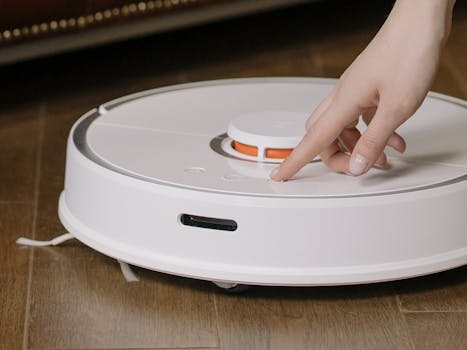How Robot Vacuums Are Learning to Pick Up Your Socks
The rise of technology has led to numerous innovations that have greatly improved our daily lives. One such innovation that has gained widespread popularity in recent years is the robot vacuum. These little smart devices have made cleaning our homes a breeze, freeing up our time and energy for more important tasks. However, there has always been one task that has proven to be difficult for these robots- picking up socks. But thanks to advancements in technology, robot vacuums are now learning how to do just that.
Understanding the Challenge
When it comes to cleaning our homes, one of the biggest culprits for a messy and cluttered space is socks. Whether it’s a stray pair on the floor or a pile of them hiding under the bed, picking them up and storing them in the laundry can be a tedious task. And for robot vacuums, this seemingly simple task has always been a major hindrance to their efficiency.
The main challenge lies in the design of the robots themselves. Most robot vacuums are equipped with sensors and software that allow them to navigate through your home and avoid obstacles. However, these devices are not designed to pick up objects and store them away. So, when they encounter a sock on the floor, they simply maneuver around it, leaving it behind for you to pick up later.
The Solution: Machine Learning
With the introduction of machine learning and artificial intelligence, robot vacuums are now learning how to pick up socks. Machine learning is a subset of AI that focuses on enabling machines to learn and improve from experience without being explicitly programmed for a specific task. This means that these robot vacuums can now be taught how to identify and pick up socks, just like we would teach a child.
Through a process called deep learning, a robot vacuum can analyze images of socks and determine their characteristics, such as color, size, and texture. This allows the robot to differentiate between a sock and other objects, such as a toy or a piece of clothing. With each successful pick-up, the robot’s algorithm is updated, improving its ability to identify and pick up socks in the future.
The Potential Impact
The ability to pick up socks may seem like a small achievement, but it has a significant impact on the overall efficiency of robot vacuums. By eliminating the need for human intervention for this task, these devices can now work uninterrupted, making cleaning more efficient and saving us valuable time and effort.
Moreover, this development opens up possibilities for the use of robots in other household tasks that require object manipulation, such as organizing objects on shelves or putting away dishes. With further advancements, we may see robot vacuums evolve into multi-purpose cleaning and organizing devices.
Challenges to Overcome
While the advancements in machine learning have enabled robot vacuums to pick up socks, there are still some challenges to overcome. One of the major challenges is the integration of this technology into existing robot vacuum models. It may not be feasible for all users to purchase a new robot just for this feature. Therefore, manufacturers will need to find a way to upgrade existing models or create upgrade kits that can be installed by users.
Another challenge is ensuring the safety of both the robots and the objects they are picking up. Since these devices are designed to suck up dirt and debris, there is a possibility that they may also pick up small objects, such as coins or jewelry, or get tangled in clothing items. Manufacturers will need to find a way to prevent such incidents to avoid damage to the objects or the robot itself.
The Future of Robot Vacuums
The advancements in machine learning and artificial intelligence have opened up endless possibilities for robot vacuums, making them more than just a device that vacuums floors. With the ability to learn and adapt to our needs, these robots are becoming smarter and more efficient in performing household tasks.
While the ability to pick up socks may not seem like a groundbreaking achievement, it is a significant step towards a more seamless integration of technology into our daily lives. And with further improvements, we can expect to see robot vacuums become an essential part of our homes, taking on a range of tasks and freeing up even more of our time for the things that truly matter.
Conclusion
Robot vacuums have come a long way since their inception and are now learning how to tackle one of the biggest challenges of cleaning- picking up socks. With machine learning, these devices are becoming smarter and more efficient, making our lives easier and saving us valuable time. As technology continues to advance, we can expect to see more developments in the field of robotics, paving the way for an even more automated and convenient future.










